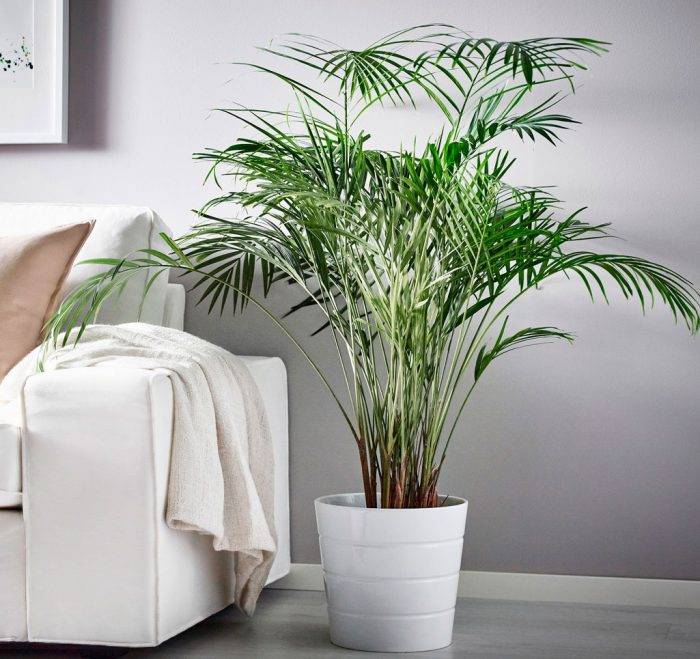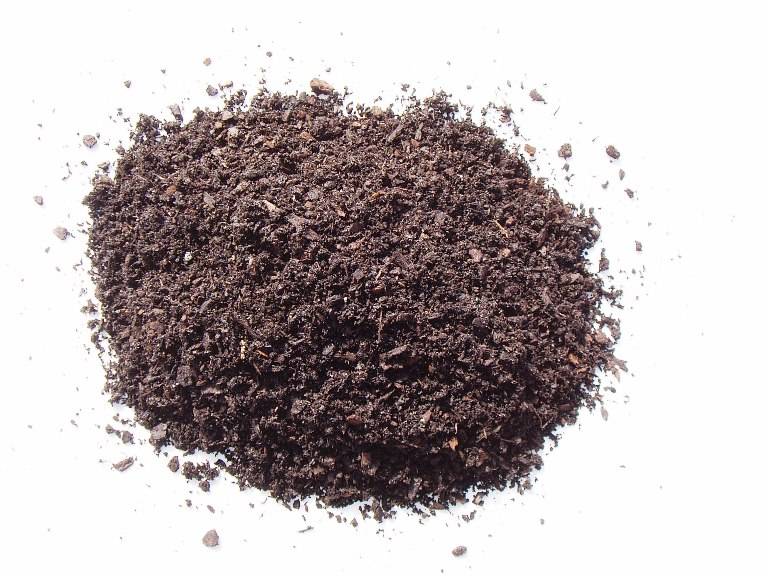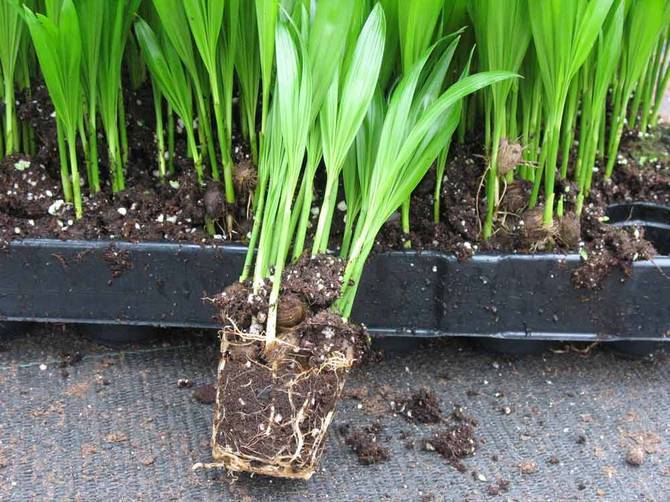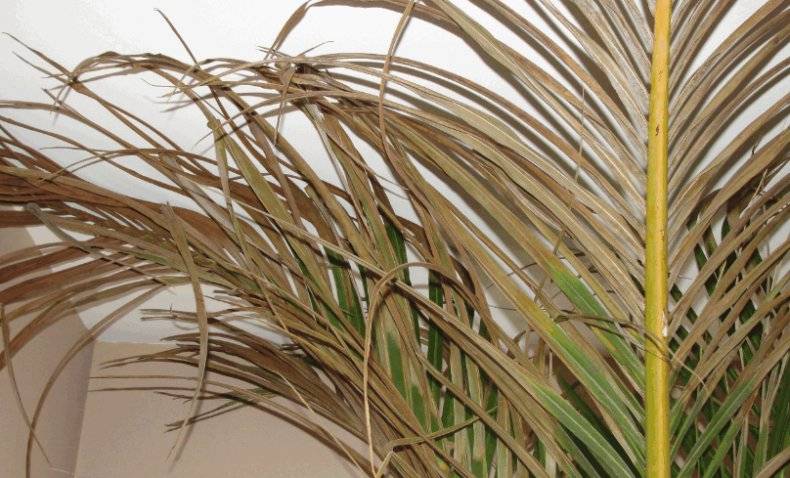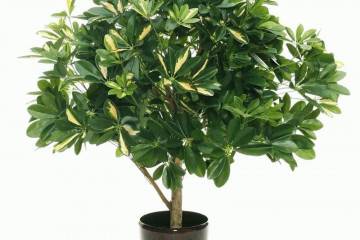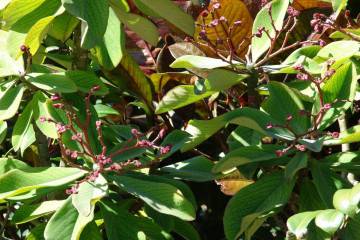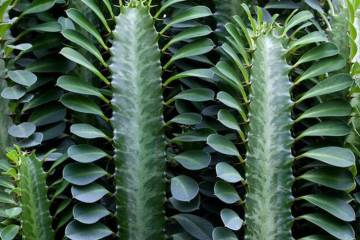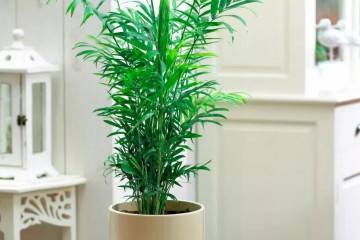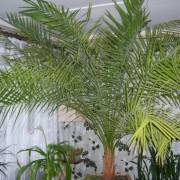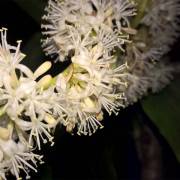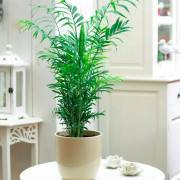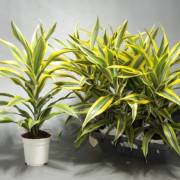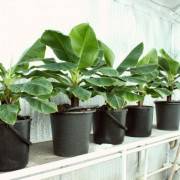Chrysalidocarpus - home care
Content:
Palm trees are one of the most popular houseplants today. Chrysalidocarpus is especially in great demand, which is suitable both for decorating compact apartments and for spacious offices.
What does chrysalidocarpus look like, which family does it belong to
Palm belongs to the arec family, which have their own characteristics:
- These bush plants can be either single-stemmed or multi-stemmed.
- The height of the shoots of palm trees in the wild reaches 10 m, and at home it mainly ranges from 3 to 5 m.
- Their leaves are carved. They are very wide and long; there can be about 60 of them on the stem. The length of the leaves reaches 2 m and the width is 90 cm.
Briefly about the history of appearance
The homeland of Chrysalidocarpus is the Comoros and the island of Madagascar. Locals nicknamed this palm the golden butterfly. This name arose because of the unusual color of its fruits.
The main species of chrysalidocarpus
In nature, there are about 20 species of chrysalidocarpus. The most famous among them are Yellowish and Madagascar.
Chrysalidocarpus yellowish (Chrysalidocarpus lutescens)
This species is also called yellowish dipsis. It belongs to the reed palms and is a dense dense bush with shoots coming from the very roots of the mother tree. Its height reaches 2 m.
Chrysalidocarpus lutescens has beautiful yellowish-variegated leaves that form an arc as they grow. Young petioles and leaf stalks are covered with scales, which come off over time, but small black dots remain in their place.
Chrysalidocarpus Madagascar (Chrysalidocarpusmadagascariensis)
The Madagascar species is a tall plant. In natural conditions, its height reaches 9 m, but in a domestic environment it is much lower. The feathery leaves of this plant are collected in bunches. Their length becomes 45 cm. A single flower stem has a ring-like structure.
Features of caring for chrysalidocarpus at home
These palms are inhabitants of warm and humid tropics, therefore, when leaving at home, yellowish chrysalidocarpus needs to provide an appropriate temperature regime, watering and lighting. Then he will certainly delight those around him with his beauty.
Temperature and lighting
The optimal temperature regime for a flower ranges from 22-25 ° C. In winter, it is best to keep the temperature below 16 ° C. It is better not to create artificial temperature fluctuations for this plant.
Areca chrysalidocarpus loves bright light, therefore even direct sunlight does not pose a threat to it. However, if the plant is indoors, then during a period of very hot weather, the room must be periodically ventilated and created for a time in partial shade.
Watering and humidity
This plant loves moisture, but watering must be controlled. Watering chrysalidocarpus is best when about 3 cm of soil dries out in the pot.
If we are talking about the winter period, then watering is carried out less often. You can wait until about half of the soil in the pot dries out and then irrigate the ground. The water should be soft, settled and warm.
This palm tree is very fond of high humidity, therefore, in the room where it is contained, it should be at least 60%. In the summer, the plant needs to be sprayed. He will definitely benefit from taking a shower, at least 2 times a month. If it is not possible to organize a shower, then the leaves of the plant must be wiped with a damp cloth. In winter, it is better to exclude spraying.
Soil preparation and feeding features
Chrysalidocarpus, like most flowers, loves nutritious and light soil. The soil should be slightly acidic. Alkaline soil is not at all suitable for this palm tree.
You can prepare the land for cultivation yourself. To do this, take in equal parts double portions of sod and humus-leaf land. To them add 1 part of rotted manure, sand and peat, as well as half a portion of charcoal.
Chrysalidocarpus needs regular feeding. In summer and spring, fertilizers are applied 2 times a month, and in winter they are reduced to 1 time.
The nuances of caring for a plant in winter, dormant period
The dormant period of the plant occurs due to the reduction in daylight hours. At this time, you can exclude spraying flowers, reduce watering and fertilization, which were already mentioned above.
When and how it blooms, flowering periods
It is almost impossible to see a blooming chrysalidocarpus in an apartment environment. Outdoor plants can delight the owners with yellow, heterosexual inflorescences that sprout from the leaf sinuses. This happens in May or June. Over time, the flowers are replaced by berries.
How the palm tree reproduces
Chrysalidocarpus reproduces in two ways - by seeds and basal processes. Both of these methods are successful, so you can use either of them.
Seed propagation
Chrysalidocarpus lutescens is easy to grow from seed. It is worth sowing them at the beginning of spring, when daylight hours increase. In order for the planting to be successful, and the flowers to sprout, you need to adhere to certain rules:
- The seeds need to be soaked for 3-4 days. They are soaked in warm water, the temperature of which reaches about 300.
- The soaked planting material is sown in peat-sandy soil, no deeper than 2 cm.
- The room should have a temperature regime of about 20-250, as well as good lighting.
- The sprouts will appear in 3 or 4 months, and when 1 leaf has already formed on the palm, the flowers must be planted in separate pots with a diameter of about 12 cm.
Propagation by basal processes
The plant can be propagated by basal processes at least all year round, however, the best option is spring and summer. The scion is removed from the mother tree with a sharp knife. You need to choose the sprout that has already formed a root. After separation from the mother tree, it is placed in moist soil and cared for, just like the mother tree.
Plant transplant when buying or planting
This plant does not like transplanting, therefore it must be carried out exclusively in rare cases, when the rhizome of the Areca Chryza has already grown very much and needs free space.Since the roots of this flower are very thin, when transplanting, it is necessary to remove the entire earthen lump from the pot.
A thick layer of expanded clay must be poured onto the bottom of the pot. It will absorb excess moisture and gradually release it into the soil as it dries.
After transplanting, the plant is left in the room and provided with diffused bright light.
Possible growing problems
When growing chrysalidocarpus areca palm, you can face a number of problems that will not only negatively affect the appearance of the plant, but may even lead to its death. The palm tree can be affected by a variety of diseases and pests that do not mind taking advantage of the nutritious sap of its leaves.
The leaves on the palm tree are drying
Most often, chrysalidocarpus leaves or their tips dry out due to improper care or inappropriate conditions. The palm tree often suffers from dry air and a lack or excess of moisture.
In order for chrysalidocarpus to have excellent health, sharp temperature changes should not be allowed. Otherwise, its leaves will darken and dry out.
In winter, the palm tree does not need to be placed near the heater. It dries the air too much and causes great harm to the leaves, which lose their decorative effect. If the house is small and there is no way to avoid the location of these flowers near the heater, then a bucket of water must be placed next to them.
Pests and diseases
Most often, chrysalidocarpus dipsis is attacked by:
- Mealybug. You can easily guess about the appearance of this pest, since the palm tree seems to become sprinkled with pieces of cotton wool, and its leaves turn yellow and wither. This parasite appears in conditions of very high humidity and temperature. To get rid of a spider mite, you should moisten cotton wool with alcohol and eliminate pests, and the plant itself should be sprayed with insecticides.
- Spider mite. With its appearance, the palm tree becomes covered with cobwebs, and yellow specks first appear on the leaves, and then they completely dry out. Dry air is a favorable condition for this parasite. To avoid the appearance of a pest, it is necessary to maintain high air humidity and treat chrysalidocarpus with acaricides.
If you study well the topic of chrysalidocarpus care at home and faithfully adhere to all recommendations, then you can avoid many problems. Palm trees will definitely delight the eye with their luxurious leaves, regardless of the season.

